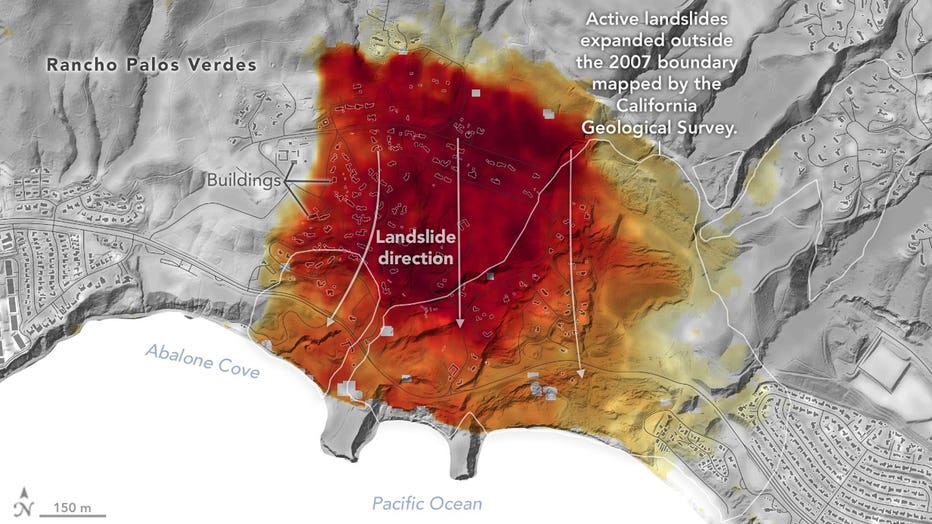Rancho Palos Verdes landslide moves as much as 4 inches a week, new NASA data shows
Rancho Palos Verdes landslides speeding up, spreading
New data from NASA shows the land underneath Rancho Palos Verdes slid as much as four inches per week last fall, and that the area of the slides is spreading.
LOS ANGELES COUNTY, Calif. - New research from NASA's Jet Propulsion Laboratory shows the alarming rate at which the land underneath Rancho Palos Verdes and other nearby communities is sliding toward the Pacific Ocean.
What we know:
NASA's JPL recently set out to track the speed of the landslides under the Palos Verdes Peninsula, which encompasses the cities of Rancho Palos Verdes, Palos Verdes Estates, Rolling Hills and Rolling Hills Estates.
Researchers sent four flights over the area between Sept. 18 and Oct 17, 2024 to track the land movement.

Data from September and October 2024, showing the motion and severity of landslides on the Palos Verdes Peninsula. Credit: NASA Earth Observatory
SUGGESTED: Rancho Palos Verdes residents shocked by power bills despite weeks-long outage
Using radar attached to those planes, the JPL found that in some areas, the land was sliding towards the water up to four inches a week. Not only did the data show the land is sliding faster, but it found that the overall area affected by the landslides has also increased.
Previous measurements taken in the area showed the land moving by up to nine to 12 inches per week.
The backstory:
The landslides under the Palos Verdes Peninsula are ancient. According to the city of Rancho Palos Verdes, the land has been moving since 1956, when Los Angeles County extended Crenshaw Boulevard.
Two consecutive years of record-breaking rain in the region have made the problem worse, and quickened the landslides. In September 2024, several communities in Rancho Palos Verdes, mainly the Portuguese Bend community, had utilities shut off because the rapid land movement was causing damage to roads and electrical equipment.
Many homes in the area have also been red tagged.
Man gets emotional seeing RPV family home damaged
RELATED: A man got emotional watching the damage his family home endured due to land movement in Rancho Palos Verdes.
What they're saying:
Alexander Handwerger, the JPL scientist who performed the analysis over the peninsula, says that "we're seeing that the footprint of land experiencing significant impacts has expanded, and the speed is more than enough to put human life and infrastructure at risk."
In a statement to FOX 11, the city of Rancho Palos Verdes said the JPL's analysis "confirms and validates what the City has been observing." However, the city noted that the landslides have slowed down since the JPL's measurements, and credited the change to the city's dewatering wells, combined with drier conditions in the region.
"The City is hopeful that this trend holds with its dewatering and winterization measures and continues to urge state and federal agencies to financially support these efforts," the city said.
The Source: Information in this article is from NASA's Jet Propulsion Laboratory, the city of Rancho Palos Verdes and previous FOX 11 reports.

